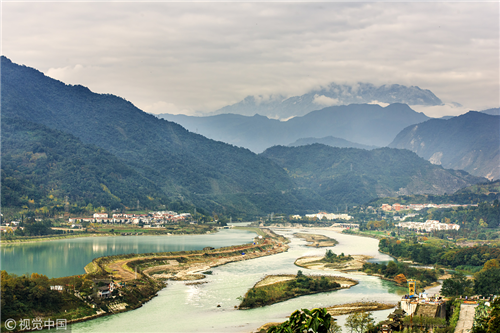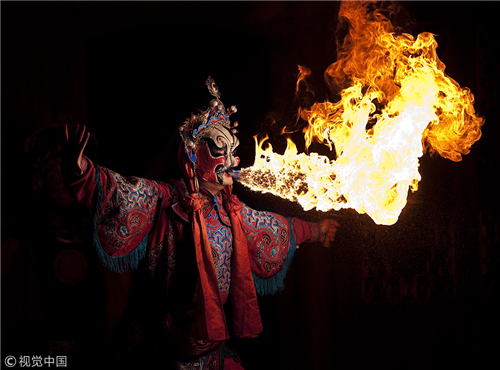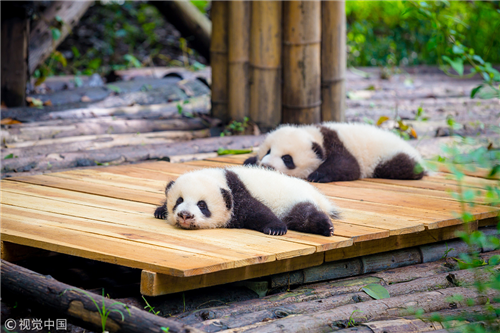Pandas, opera, and huge stone Buddha: Discover Chengdu in 3 days

Transit passengers from 53 countries including 39 European countries, six American countries, two Oceania countries, and six Asian countries can spend up to 144 hours in Chengdu without a visa. This visa-free policy allows foreigners from these 53 countries with visas and plane tickets to a third country to transit through Chengdu for a visa-free stay of up to 144 hours. The following is a suggested itinerary for a 3-day trip.
With a population of about 8 million, Chengdu is the fifth largest city in China. It's a place to experience countless interesting things at almost every moment. Chengdu is not only a cosmopolitan city, but also the birthplace of Jiaozi, the world's first paper currency. It sits at the foot of the Tibetan plateau and is circled by the Sichuan Mountains with rich cultural implications. If you want to explore places of historic interest and scenic beauty in Sichuan, Chengdu is a perfect starting point, for it is surrounded by world heritage sites and full of numerous bars and tea houses. Even three days is not enough to explore it, but here's a plan for you to start your journey.
Day One: Mt Qingcheng, Dujiangyan Irrigation System, and a Sichuan opera
If you're fed up with the bustle and hustle of cities, you'll love Mt Qingcheng. This forest-crowned Qingcheng mountain range is 35 miles away from the city center and is one of the most sacred mountains in Taoism. To reach the summit of the mountain, you need to climb for four hours. But you will pass many ancient temples and caves of odd shapes, and that's why this route is the most popular among the local people. Or, if your time is limited, the Jianfu Temple at the foot of the mountain is open to you and then you can take the cable car to the summit.

[Photo/VCG]
After that, your next stop could be the Dujiangyan Irrigation System, the only irrigation project system in the world built over 2,000 years ago that is still used for practical purposes.

[Photo/VCG]
If you are not too tired after returning to Chengdu, grab the last chance to watch a Sichuan opera or cultural show -- you’ll be impressed by the face-changing performers, thumping percussion and high-flying acrobats.

[Photo/VCG]
Day Two: Chengdu Research Base of Giant Panda Breeding, Green Ram Temple, and People's Park
Even though you'll have to be up early, maybe you still want to visit Chengdu's most famous attraction---the Chengdu Research Base of Giant Panda Breeding. The feeding of panda cubs is usually set at 9 am, which is a golden opportunity for you to meet the giant pandas in person.

[Photo/VCG]
After that, you can take a taxi and go back to town, visiting a famous sculpture at Qingyang Palace, also called “Green Ram Temple”, a name that comes from a bronze goat in the palace. The statue possesses different characteristics of the twelve animals of the Chinese zodiac. Just take a rest and refresh yourself with a cup of tea, then go to enjoy your evening dancing at People’s Park.

[Photo/VCG]
Day Three: Day trip to the Leshan Giant Buddha
Although it is one hour's journey away from Chengdu city, you won’t want to miss the world’s largest stone Buddha. Listed as a UNESCO world heritage site, the Leshan Giant Buddha has a benevolent countenance. The huge figure sits with his hands resting on his knees, his head reaching the hilltop and his feet the river, occupying the entire hillside. His toes are taller than a human, and both of his eyebrows are 5.5 meters long. Mountain Emei is not far away from the Buddha, so many visitors will choose to combine the two trips together. Known as the "mountain of brightness" in Buddhism, Mountain Emei is the tallest among all the sacred mountains of Buddhism in China.

[Photo/VCG]
Bars to try:
Nightlife spots can be found almost everywhere in this prosperous metropolis, but here are some Chengdu recommendations for you.
1. Music House
You can enjoy plenty of live Chinese and international music at the Music House bar and club. Every night you can watch a different live act here, and the bar is open almost every day. Some famous bands and singers perform here, including the French post-rock band Microfilm, and Chinese talent Luo Dayou. A few local celebrities sometimes will also join the crowd, making this bar the best people-watching spot.
Music House, 15 Yulin South Road, Chengdu, China, +84 28 6130 1188
2. The Beer Nest
You can sample a variety of craft and imported beers in the Beer Nest. The bar serves delicious snacks as well as Belgian-style fries, burgers and an ale and beef stew. Guests can even request a small children's menu. Special dishes such as whole roasted chicken and mussels can be ordered in advance. The Beer Nest has frequent promotions, like white wine (Wednesday), moules frites and Belgian beers (Saturday).
The Beer Nest, 48 Master Commercial Street, Renmin South Road Section 4, Chengdu, China, +86 137 3087 1837
3. Bookworm
Musical and literary events are often held in this bar. It encompasses a bookstore, library, restaurant and bar. A decent wine list and snacks menus are provided. This is the spot to encounter Chengdu's intellectuals and artists, or you can just relax and enjoy some live jazz.
The Bookworm, 2-7 Yujie East Road, Chengdu, China, +86 28 8552 0177
4. Little Bar
This is the venue for Chengdu's rock music scene. Chinese hardcore band Noise Gate and a British metal group give performances worth waiting for. The entrance fee is between 30 to 100 yuan.
Little Bar, 87 Fangqin Street, Chengdu, China, +86 28 8556 8552
5. Jing Jie Bar
This bar is one of Chengdu's nightlife hubs. Guests coming here immerse themselves in a relaxed atmospheres and wonderful live music. Jing Jie has been the favorite place for the local people to relax and have fun with Chinese drinking games since its opening over a decade ago.
Jing Jie Bar, Jiuyanqiao, Junping Street, Chengdu, China.
Food tips:
Of the eight major schools of China's culinary art, Sichuan cuisine is perhaps the most popular. Originating in Sichuan Province of western China, Sichuan cuisine, known as Chuan Cai in Chinese, enjoys an international reputation for being spicy and flavorful. Yet the highly distinctive pungency is not its only characteristic. In fact, Sichuan cuisine boasts a variety of flavors and different methods of cooking, featuring the taste of hot, sweet, sour, salty, or tongue-numbing.
Statistics show that the number of Sichuan dishes surpasses 5,000. Dishes typical of Sichuan are twice cooked pork, spicy diced chicken with peanuts, dry-fried shark fin, and fish-flavored shredded pork. One of the popular dishes is Pockmarked Woman's bean curd (or Mapo Doufu in Chinese) which was invented by a Chengdu chef's pockmarked wife decades ago in the Qing Dynasty (1644-1911). The cubed bean curd is cooked over a low flame in a sauce which contains ground beef, chili, and pepper. When served, the bean curd is tender, spicy, and appetizing. Although many Sichuan dishes live up to their spicy reputation, often ignored are the large percentage of recipes that use little or no spice at all, including recipes such as "tea smoked duck".
Last Updated: Aug 31, 2018




